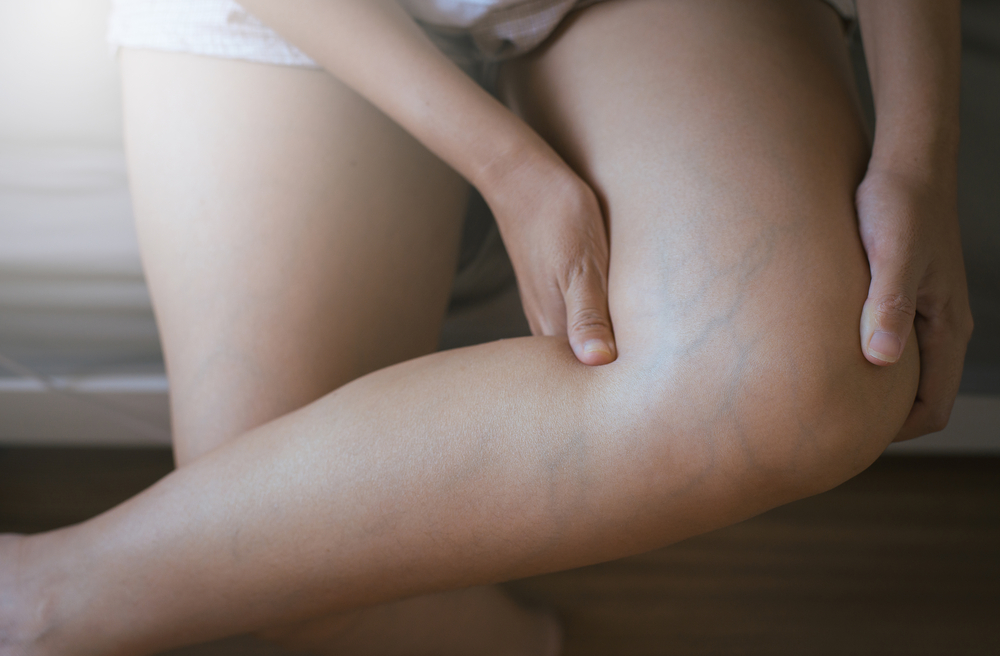Varicose Veins and Blood Clots: Are You At Risk?
 Varicose veins are swollen, twisted, and sometimes painful veins that can be seen just under the skin’s surface. When these damaged valves do not work correctly, blood collects in the legs, and blood pressure in a person’s legs builds. When veins bulge and twist, blood flow through them can become slow. This can lead to superficial blood clots, also known as superficial thrombophlebitis, phlebitis, or superficial venous thrombosis.
Read on to learn more about the link between varicose veins and blood clots to assess your risk for deep vein thrombosis.
Varicose veins are swollen, twisted, and sometimes painful veins that can be seen just under the skin’s surface. When these damaged valves do not work correctly, blood collects in the legs, and blood pressure in a person’s legs builds. When veins bulge and twist, blood flow through them can become slow. This can lead to superficial blood clots, also known as superficial thrombophlebitis, phlebitis, or superficial venous thrombosis.
Read on to learn more about the link between varicose veins and blood clots to assess your risk for deep vein thrombosis.
Risk Factors For Varicose Veins
Varicose veins are often a genetically inherited condition and other factors that may increase pressure in the veins. Other common contributing factors to the formation of varicose veins include:- Being overweight or obese
- Someone older in age
- Being female
- Having a leg injury
- Pregnancy
- Having a sedentary lifestyle
- Immobility
- Smoking or tobacco use
- Taking contraceptive pills or hormone replacements
Superficial Thrombophlebitis
Since most varicose veins are in the superficial veins, most blood clots form there, too. These veins are located just below the surface of the skin. When a blood clot forms, your skin appears red, swollen and is commonly painful. This condition is known as superficial venous thrombosis and is directly linked to varicose veins. Superficial thrombophlebitis occurs when you have an injury. Even a slight injury to a varicose vein can cause it to become inflamed. That sudden inflammation in the vein causes blood flow to slow down and blood clots to form. Unlike deeper blood vessels, superficial veins aren’t surrounded by muscle. Muscles act as pumps for your veins. Without a pump to move it out, a blood clot can stick to the wall of your vein and be hard to dislodge. Your varicose vein can feel like a hard cord and become painful. Fortunately, the issue of superficial thrombophlebitis typically goes away on its own. In a few days, your inflammation should decrease. After a few weeks, the hardness of your vein subsides. Applying a warm compress and taking aspirin can ease your pain and symptoms until the problem is resolved.Deep Vein Thrombosis
While varicose veins primarily affect veins close to the skin’s surface, their existence can still indicate similar issues that run deeper. A study published in the Archives of Dermatology in 2009 indicated that one in four patients with superficial vein thrombosis also had a deep vein thrombosis. Symptoms of deep vein thrombosis include pain, redness, warmth, and tenderness around the affected vein, along with swelling and redness of the affected limb. Your doctor can diagnose deep vein thrombosis with blood tests and with confirmation from ultrasound imaging. Treatment typically involves blood-thinning medications in addition to a recommended treatment plan for having varicose veins removed.Telling the Difference Between the Two
The differences between the two conditions are subtle, making diagnosis difficult without an accurate diagnosis from a vein specialist. A knowledgeable and experienced vein specialist can diagnose superficial thrombophlebitis on appearance alone. The skin over the clotted vein is red, warm, and tender to the touch. Diagnosing deep vein thrombosis can be more difficult because patients often experience no symptoms. Hidden signs of deep vein thrombosis include swelling, tenderness, calf pain, and sudden leg fatigue. If you believe you have a blood clot in your leg or you are unsure if the clot is superficial or deep, Vein & Laser Institute is here to help. We offer several different options for the treatment of varicose veins. Contact us today to schedule a vein consultation to determine the best-customized treatment plan for your specific situation.Recent Posts



